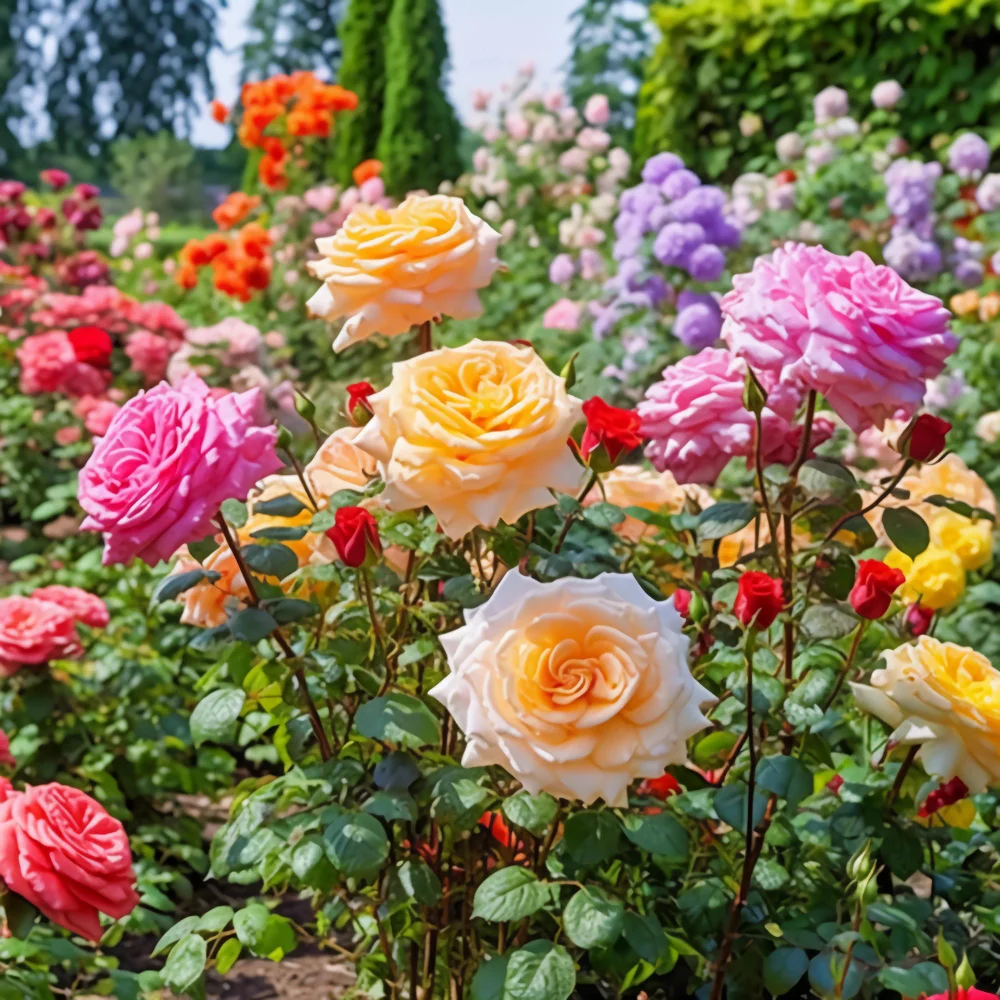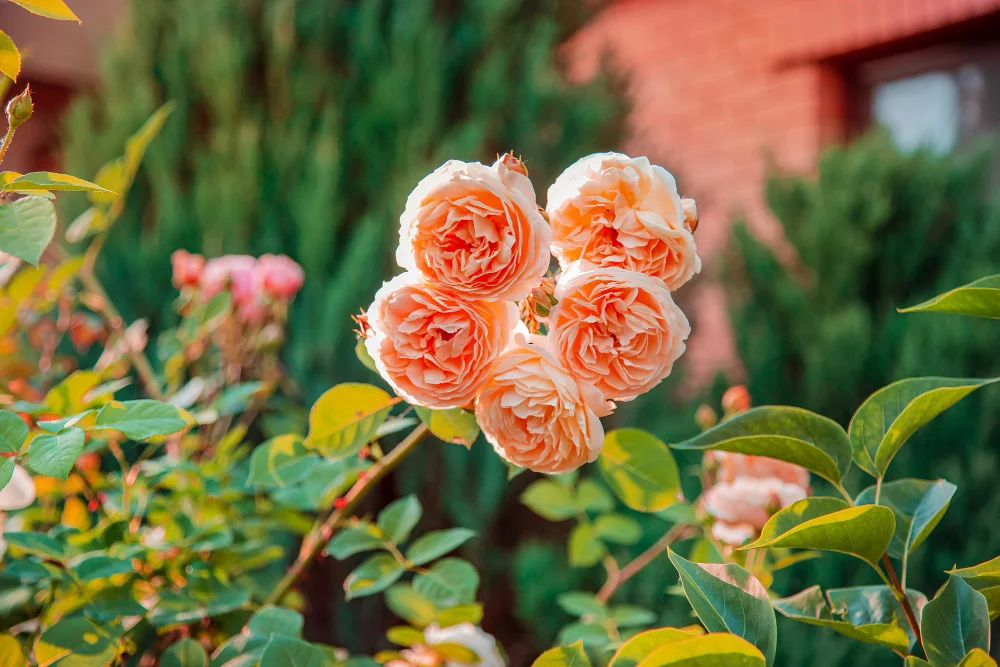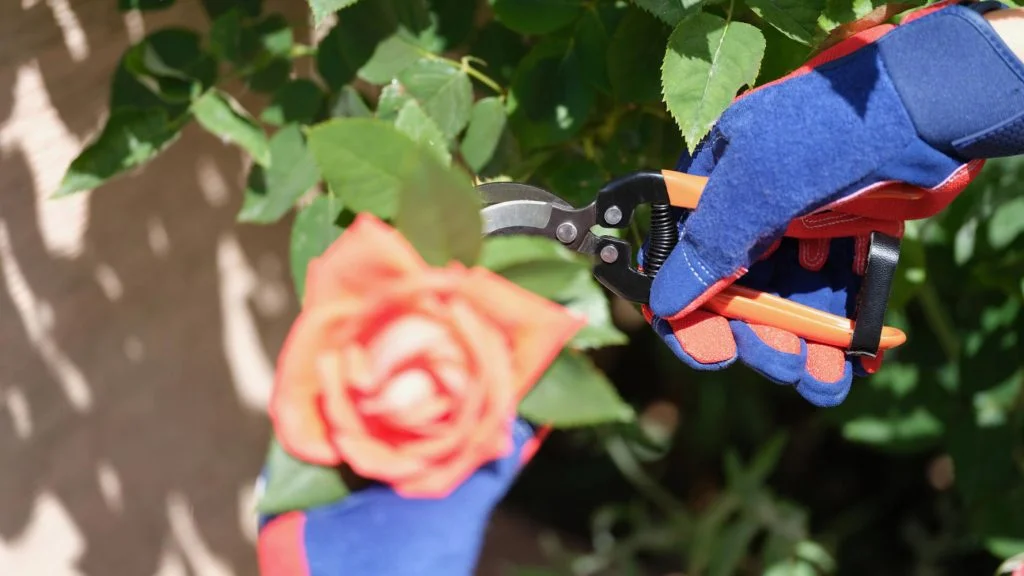Last updated on
Learn everything you need to know about roses and why you should include them in your garden and decor. Read on!
Roses are one of the most popular flowers in the world, and it’s no wonder why. With their vibrant colors, unique shapes, and sweet fragrances, roses are a beautiful addition to any garden or bouquet.
However, with so many varieties to choose from and care requirements to consider, it can be overwhelming for novice gardeners.
In this guide, we’ll explore the enchanting world of roses, including different varieties, how to care for them, and their symbolic meanings.
What's Inside
Symbolism of Roses

Roses have been used to convey emotions for centuries. Different colors of roses have different meanings, and they’ve played a significant role in cultural and historical events. There have been many noteworthy quotes about roses from famous literary figures, celebrities, and many others.
Their symbolisms are often vividly or obscurely described in these quotes. Red roses are often associated with love and passion. They’re a popular choice for Valentine’s Day and anniversaries. White roses represent purity, innocence, and new beginnings. They’re often used in weddings and christenings.
Yellow roses symbolize friendship and joy. They’re a great way to brighten someone’s day and bring a smile to their face. Pink roses come in a variety of shades and represent gratitude, appreciation, and admiration. They’re a great way to say thank you or show someone that you care.
Orange roses represent enthusiasm and excitement. They’re a great way to congratulate someone on a new job or achievement. Purple roses symbolize enchantment and love at first sight. They’re a great way to show someone that you’re attracted to them. Black roses represent death and mourning. They’re often used in Gothic art and literature.
In addition to their color symbolism, roses have played significant roles in historical and cultural events around the world. In ancient Greece, for example, roses were associated with the goddess Aphrodite, who was often depicted wearing a crown of roses.
In medieval times, roses were a symbol of the Tudor dynasty in England and were even used in the design of their family crest.
Varieties of Roses

Roses come in a variety of shapes, sizes, and colors. To better understand these differences, let’s explore some popular rose varieties.
Hybrid Tea Rose
Hybrid tea roses are one of the most common types of roses and are often used as cut flowers. They have long stems and large blooms that range in color from white and yellow to pink and red. Hybrid tea roses require full sun (at least six hours a day), well-draining soil, and regular fertilization.
Floribunda Roses
Floribunda roses are known for their clusters of smaller blooms and strong fragrances. They’re ideal for mass plantings and borders and come in a wide range of colors. Floribunda roses prefer full sun to partial shade and well-draining soil.
Grandiflora Roses
Grandiflora roses are a cross between hybrid tea roses and floribunda roses. They have large blooms like hybrid teas but grow in clusters like floribundas. Grandiflora roses require full sun, well-draining soil, and regular fertilization.
Climbing Roses
Climbing roses are a great way to add height and interest to your garden. They have long, flexible canes that can climb trellises, walls, and other structures. Climbing roses come in a variety of colors and bloom sizes. They require full sun to partial shade and well-draining soil.
Shrub Roses
Shrub roses are hardy and disease-resistant and come in a variety of shapes and sizes. They’re often used in mass plantings and as hedges. Shrub roses prefer full sun to partial shade and well-draining soil.
Caring for Roses

Once you’ve selected the perfect variety of rose, it’s important to know how to care for them to ensure healthy growth and vibrant blooms.
Soil Requirements
Roses require well-draining soil. If your soil is heavy clay or waterlogged, consider adding organic matter, such as compost or peat moss, to improve drainage.
Sunlight Requirements
Most rose varieties require at least six hours of full sun per day. Be sure to plant your roses in an area of your garden that receives adequate sunlight.
Watering Requirements
Roses need regular watering, especially during hot and dry weather. Water deeply, making sure the soil is moist to a depth of at least 6 inches. Avoid getting water on the leaves, as this can promote the growth of fungal diseases.
Fertilizing Requirements
Roses require regular fertilization to promote healthy growth and abundant blooms. Use a balanced fertilizer (10-10-10) every four to six weeks during the growing season.
Pruning Requirements
Pruning is an essential part of rose care. It helps to promote flowering, maintain shape, and remove dead or diseased wood. Prune hybrid tea, grandiflora, and floribunda roses in the early spring before new growth appears. Prune climbing roses after they’ve finished blooming, cutting back any dead or diseased wood.
Pest and Disease Management
Common pests and diseases that affect roses include aphids, spider mites, black spot, and powdery mildew. To prevent these issues, keep your roses healthy with regular watering and fertilization, and remove any diseased or dead wood promptly. You can also use insecticidal soaps and fungicides as needed.
Roses are not only beautiful to look at, but they also have a rich history and cultural significance. Whether you’re a seasoned gardener or just starting out, adding roses to your garden is a great way to bring color and fragrance to your space. By selecting the right variety, providing adequate care, and understanding their symbolic meanings, you can enjoy the enchanting world of roses all year round.




